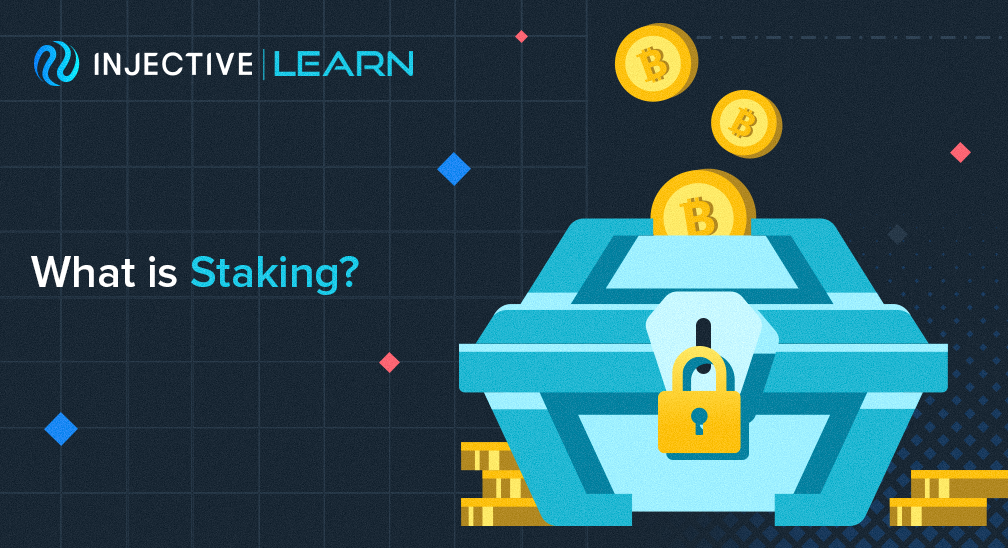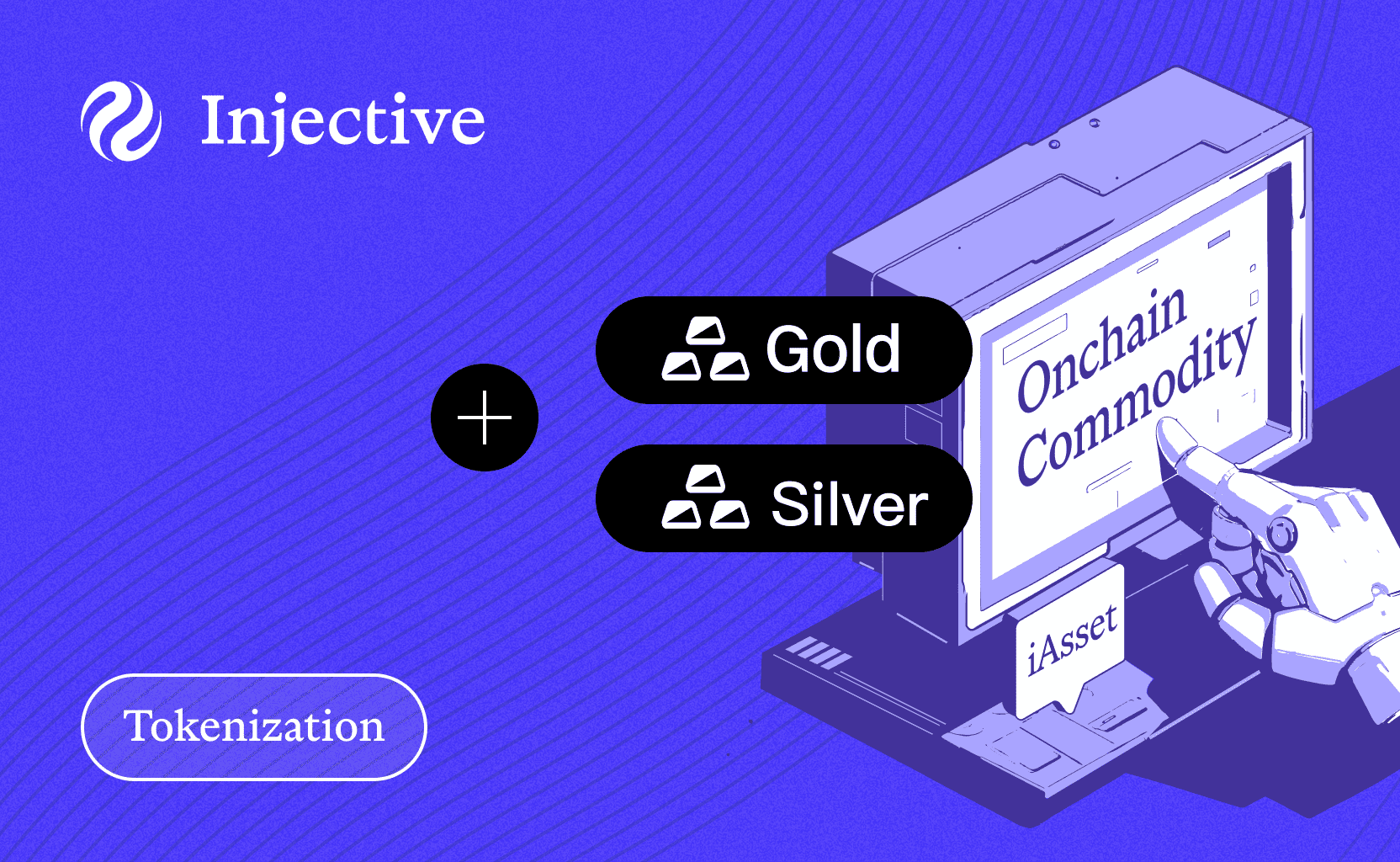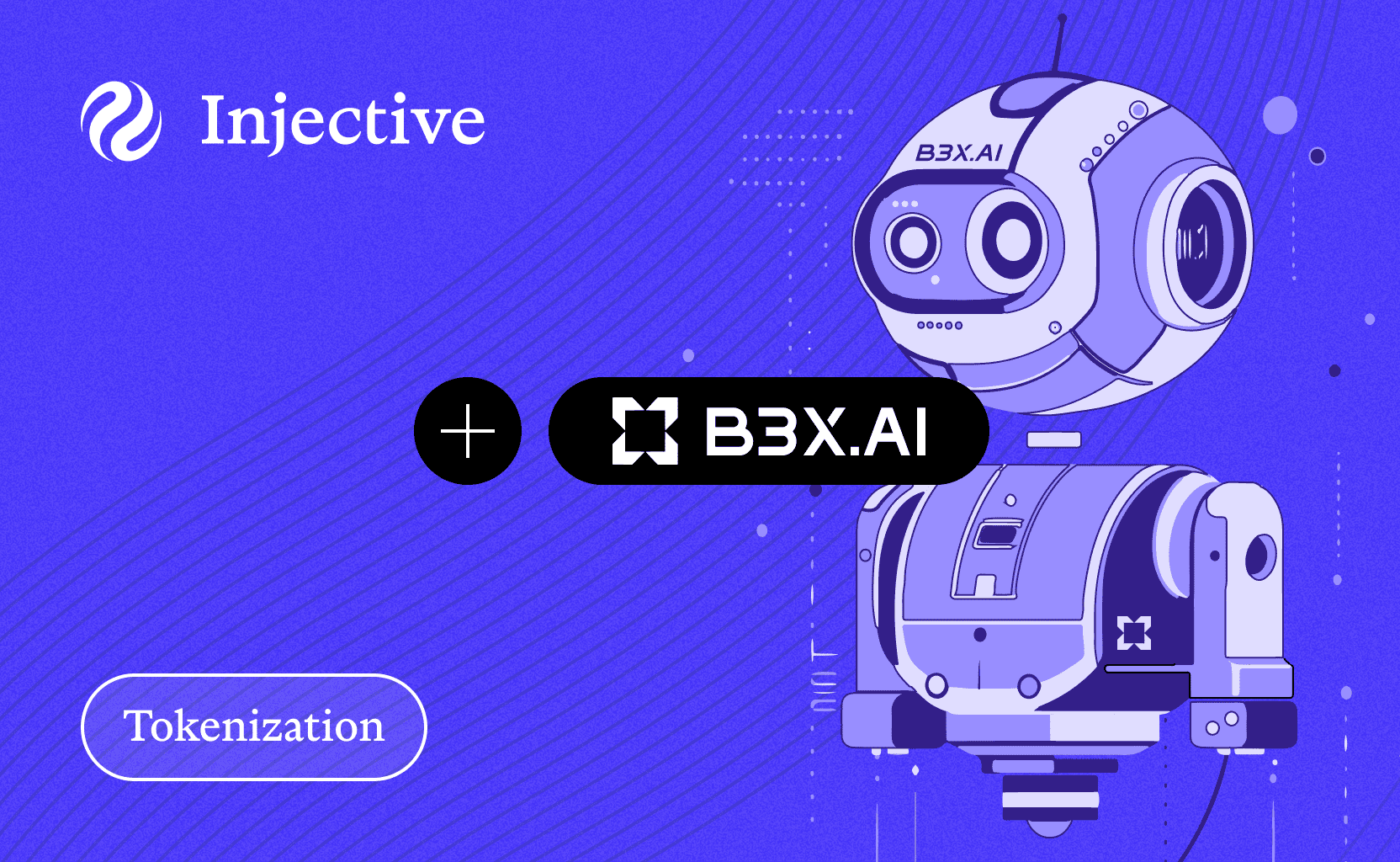Welcome to Injective’s What is Staking guide. Here, you will be able to find an introduction to a number of important topics related to staking. Whether you are new to crypto or an experienced trader, this will cover all of the essentials.
Overview
Staking can be perceived as a less resource-intensive alternative to mining. In blockchain, staking involves holding funds in a cryptocurrency wallet to support the security and operations of a blockchain network. Simply put, it is the act of locking cryptocurrencies to receive rewards.
In most cases, traders are able to stake tokens directly from their crypto wallets.
To fully understand what staking is, we recommend that you review this guide on Proof of Stake (PoS). PoS is a consensus mechanism that allows blockchains to operate at a more energy-efficient pace while maintaining a reasonable degree of decentralization.
How Does Staking Work?
Proof of Stake (PoS) chains produce and validate new blocks through the process of staking. Staking involves validators (participants in the network) who lock up their tokens for the opportunity to be selected by the protocol to create a block. The selection process is random and takes place at specific intervals. Participants who stake greater amounts usually have a higher chance of being selected as the next block validator.
Staking allows blocks to be produced without relying on specialized mining hardware, such as application-specific integrated circuits (ASIC). While ASIC mining requires a significant investment in hardware, staking requires a direct investment in the cryptocurrency itself. Therefore, instead of competing for the next block with computational work, PoS validators are selected based on the number of tokens that they are staking. The “stake”, i.e. a validator's token holding amount, is what incentivizes validators to maintain network security. Failure to do so puts their entire stake at risk.
On a very practical level, staking usually just means keeping funds in a suitable wallet. This enables essentially anyone to perform various network functions in return for staking rewards. It may also include adding funds to a staking pool, which we will cover shortly.
Calculating Staking Rewards
Each blockchain network may use a different method to calculate staking rewards. Some blockchain networks adjust on a block-by-block basis, taking into account many different factors. These can include:
- How many tokens the validator is staking
- How long the validator has been actively staking
- How many total tokens are staked on the network
- The inflation rate
- Other extraneous factors
On other blockchain networks, staking rewards may be determined as a fixed percentage or Annual Percentage Yield (APY).
What is a Staking Pool?
A staking pool refers to a group of token holders merging their resources to increase their chances of validating blocks and receiving rewards. They combine their staking power and share the rewards proportionally to their contributions within the pool. Typically, the stake has to be locked for a fixed period and usually has a withdrawal or an unbonding time set by the protocol. There is almost always a substantial minimum staking balance required to disincentivize malicious behavior.
Most staking pools require a low minimum balance and append no additional withdrawal times. As such, joining a staking pool instead of staking solo might be ideal for newer users.
However, setting up and maintaining a staking pool requires a lot of time and expertise. Staking pools tend to be the most effective on networks where the technical or financial barrier of entry is relatively high. For this reason, many pool providers charge a fee from the staking rewards that are distributed to participants. Other than that, pools may provide additional flexibility for individual stakers.
On Injective, validators help to secure the network through staking. Other participants can act as delegators by locking up their tokens with a specific validator. In return, the validators take a small percentage of the staking rewards from the delegator. The validator does the heavy lifting of setting up the right infrastructure to stake while delegators can simply lock up their tokens and earn rewards.
Cold Staking
Cold staking refers to the process of staking through a wallet that is not connected to the internet. This is most often achieved using a hardware wallet.
Cold staking is particularly useful for large stakeholders who want to ensure maximum protection of their funds while supporting the network. Blockchain networks that support cold staking allow users to stake while securely holding their funds offline. It’s important to note that if the stakeholder moves their tokens out of cold storage, they will stop receiving rewards.
Closing Thoughts
Proof of Stake (PoS) and staking opens up more avenues for anyone wishing to participate in the consensus and governance of blockchains. It also provides an easy way to earn passive income by simply holding tokens.
As the barriers of entry to the blockchain ecosystem have been getting lower, staking has become more accessible. Injective also operates via PoS so are able to take part in staking either as validators or delegators on the network.

About Injective
Injective is a lightning fast interoperable layer one blockchain optimized for building the premier Web3 finance applications. Injective provides developers with powerful plug-and-play modules for creating unmatched dApps. INJ is the native asset that powers Injective and its rapidly growing ecosystem. Injective is incubated by Binance and is backed by prominent investors such as Jump Crypto, Pantera and Mark Cuban.
Website | Telegram | Discord | Blog | Twitter | Youtube | Facebook | LinkedIn | Reddit | Instagram | Orbit Newsletter



